-
Out of stock
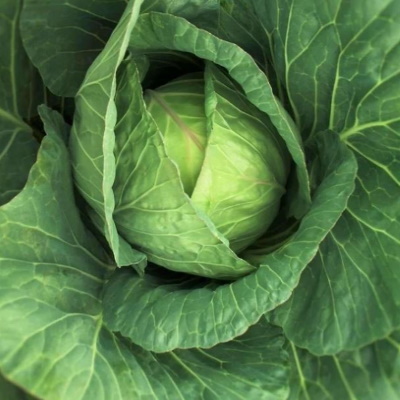 Danish Ballhead cabbage seeds produce heirloom cabbages that are mild and tender. This is a great, general-purpose cabbage that is good for sauerkraut, coleslaw, or general cooking. Big 8-25cm, light-green, well-protected heads stand happily in the garden well into the winter. Danish Ballhead was first introduced in 1887, and has remained a favourite ever since.
Danish Ballhead cabbage seeds produce heirloom cabbages that are mild and tender. This is a great, general-purpose cabbage that is good for sauerkraut, coleslaw, or general cooking. Big 8-25cm, light-green, well-protected heads stand happily in the garden well into the winter. Danish Ballhead was first introduced in 1887, and has remained a favourite ever since. -
Out of stock
 Heirloom Carrots are some of the premier baby carrots available. Bright orange, these heirloom carrots grow about 9 cm long. Each sweet carrot is crisp with a tender core. Their small size lets them grow well in containers, as well as out in the garden. Little fingers are a Nantes type of carrot. Bred in France, they develop their characteristic orange colour earlier than other varieties, these carrots can be harvested early at 8-9cm. Don't let them stay in the ground beyond around 68 days from sprouting or they begin to lose their unique gourmet flavour and texture.
Heirloom Carrots are some of the premier baby carrots available. Bright orange, these heirloom carrots grow about 9 cm long. Each sweet carrot is crisp with a tender core. Their small size lets them grow well in containers, as well as out in the garden. Little fingers are a Nantes type of carrot. Bred in France, they develop their characteristic orange colour earlier than other varieties, these carrots can be harvested early at 8-9cm. Don't let them stay in the ground beyond around 68 days from sprouting or they begin to lose their unique gourmet flavour and texture. -
Out of stock
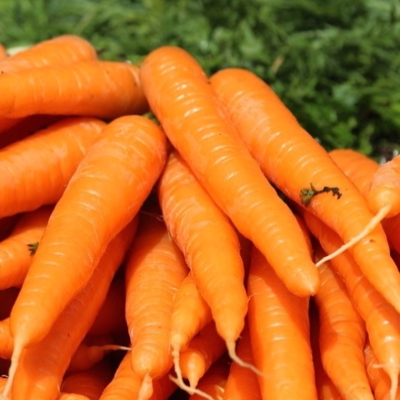 Tendersweet has long, 22-25 cm tapered roots being 5 cm at the shoulder; rich orange color; sweet, and coreless. This heirloom carrot is a reliable producer that has been pleasing folks for generations. Tendersweet carrot is one of the finest varieties, always sweet, tender, and crunchy, and uniformly tapered to a semi-blunt end. The flesh of this carrot is rich orange with an indistinct core.
Tendersweet has long, 22-25 cm tapered roots being 5 cm at the shoulder; rich orange color; sweet, and coreless. This heirloom carrot is a reliable producer that has been pleasing folks for generations. Tendersweet carrot is one of the finest varieties, always sweet, tender, and crunchy, and uniformly tapered to a semi-blunt end. The flesh of this carrot is rich orange with an indistinct core. -
Out of stock
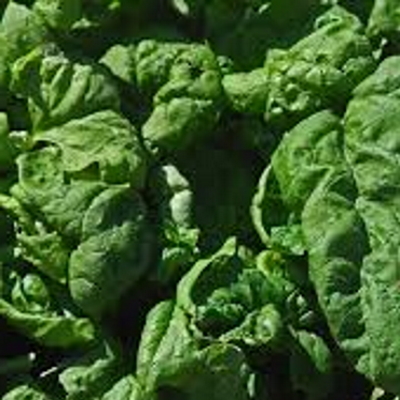 An open-pollinated French heirloom, dating back to the 1800s, Viroflay spinach is known for its huge leaves that can grow up to 20 cm long. Try using young leaves for fresh eating and let them grow for harvesting and freezing. The leaves maintain a fine flavour regardless of whether you harvest them at full size or as baby spinach. Grows quickly and does especially well in the fall/winter garden. Sow in August for fall crop, cover with frost cloth and have the earliest spring spinach.
An open-pollinated French heirloom, dating back to the 1800s, Viroflay spinach is known for its huge leaves that can grow up to 20 cm long. Try using young leaves for fresh eating and let them grow for harvesting and freezing. The leaves maintain a fine flavour regardless of whether you harvest them at full size or as baby spinach. Grows quickly and does especially well in the fall/winter garden. Sow in August for fall crop, cover with frost cloth and have the earliest spring spinach. -
Out of stock
 Wildfire Arugula was bred to be distinctive both in its flavour profile and its leaf shape. The flavour is hot and peppery; the leaves are less uniform than standard arugula. It grows quickly so plant it 15 cm apart to enjoy a cut and come again crop. Its bright green, slightly serrated leaves grow upright instead of spreading out on the ground making it easier to cut.
Wildfire Arugula was bred to be distinctive both in its flavour profile and its leaf shape. The flavour is hot and peppery; the leaves are less uniform than standard arugula. It grows quickly so plant it 15 cm apart to enjoy a cut and come again crop. Its bright green, slightly serrated leaves grow upright instead of spreading out on the ground making it easier to cut. -
Out of stock
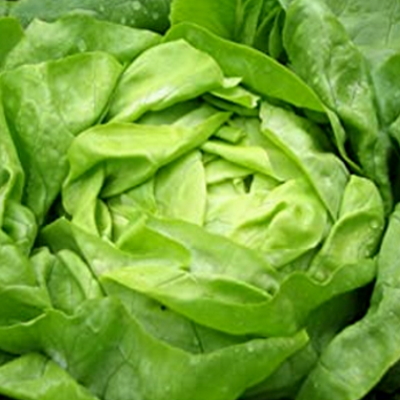 Buttercrunch is a real winner and always a favorite in our organic gardens. This is a butterhead type of lettuce with crisp, thick well-formed medium to dark green outer leaves which hides the buttery yellow-white heart. Buttercrunch has good resistance to bolting. For ultimate flavour and nutrition eat directly after picking. We found that all lettuce, especially our buttercrunch grows in moist rich organic compost. Spring lettuce is grown in sunny locations, while summer crops prefer light shade. Since lettuce is a cool-weather crop, sow the seed as soon as the soil can be worked in the spring then every two weeks thereafter to ensure a continuous supply. Sow seed about 3 mm deep. Head lettuce such as Buttercrunch should be thinned to 30 cm apart to provide ample nutrients and room for growth. An even supply of moisture during the entire growth period is imperative for success. Harvest head lettuce by cutting the head off at the base just below the lower leaves.
Buttercrunch is a real winner and always a favorite in our organic gardens. This is a butterhead type of lettuce with crisp, thick well-formed medium to dark green outer leaves which hides the buttery yellow-white heart. Buttercrunch has good resistance to bolting. For ultimate flavour and nutrition eat directly after picking. We found that all lettuce, especially our buttercrunch grows in moist rich organic compost. Spring lettuce is grown in sunny locations, while summer crops prefer light shade. Since lettuce is a cool-weather crop, sow the seed as soon as the soil can be worked in the spring then every two weeks thereafter to ensure a continuous supply. Sow seed about 3 mm deep. Head lettuce such as Buttercrunch should be thinned to 30 cm apart to provide ample nutrients and room for growth. An even supply of moisture during the entire growth period is imperative for success. Harvest head lettuce by cutting the head off at the base just below the lower leaves. -
Out of stock
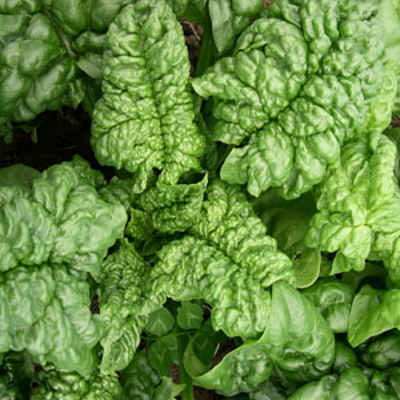 This traditional heirloom spinach has thick, succulent, dark-green savoyed (crumpled leaves) that are very sweet in salads or cooked. It is best planted in early spring and fall. If fall-planted, it will overwinter and produce much earlier than if it is spring-planted. Planted in a row tunnel in fall and you can expect baby spinach in late April to mid-May. If you have never grown spinach before the taste and freshness will win you over. Pick individual leaves from the outer edges of the plant as they become big enough to use, or cut the whole plant 2.5 cm above the ground, and new leaves will be produced. Harvest before the plant sends up a flower stalk. The secret to great spinach is to thin seedlings to 6-10 cm apart.
This traditional heirloom spinach has thick, succulent, dark-green savoyed (crumpled leaves) that are very sweet in salads or cooked. It is best planted in early spring and fall. If fall-planted, it will overwinter and produce much earlier than if it is spring-planted. Planted in a row tunnel in fall and you can expect baby spinach in late April to mid-May. If you have never grown spinach before the taste and freshness will win you over. Pick individual leaves from the outer edges of the plant as they become big enough to use, or cut the whole plant 2.5 cm above the ground, and new leaves will be produced. Harvest before the plant sends up a flower stalk. The secret to great spinach is to thin seedlings to 6-10 cm apart. -
Out of stock
 Snowball is a well-established cauliflower. Very early, dwarf compact plants produce a good size head; can be forced. Extremely reliable. Uniformly shaped, snow white heads that are thick and solid with tight curds. Good for both early and late season crops. Introduced in 1888, Early Snowball is somewhat self-blanching which means the large outer leaves tend to curl around the white head protecting it from the elements. Many growers will still tie the leaves up and around the head to protect it. Best grown during cooler portions of the growing season. Sow the snowball cauliflower seeds in compost in a seed tray or in small pots January-February under glass for July-August harvest. End of March-May outside in a seedbed, about 1 cm deep, or September-October in cold frames to overwinter. When seedlings are large enough to handle, plant them individually, keep them inside until they have 4-6 leaves. Plant outside, spacing 40- 35 cm apart, in well-drained soil, make sure you water the plants in sunny spells, protect from birds and slugs.
Snowball is a well-established cauliflower. Very early, dwarf compact plants produce a good size head; can be forced. Extremely reliable. Uniformly shaped, snow white heads that are thick and solid with tight curds. Good for both early and late season crops. Introduced in 1888, Early Snowball is somewhat self-blanching which means the large outer leaves tend to curl around the white head protecting it from the elements. Many growers will still tie the leaves up and around the head to protect it. Best grown during cooler portions of the growing season. Sow the snowball cauliflower seeds in compost in a seed tray or in small pots January-February under glass for July-August harvest. End of March-May outside in a seedbed, about 1 cm deep, or September-October in cold frames to overwinter. When seedlings are large enough to handle, plant them individually, keep them inside until they have 4-6 leaves. Plant outside, spacing 40- 35 cm apart, in well-drained soil, make sure you water the plants in sunny spells, protect from birds and slugs. -
Out of stock
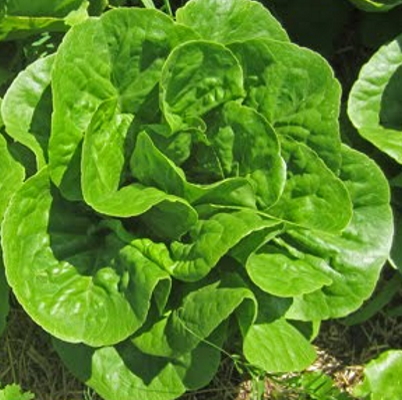 Winter Density is an early, small compact romaine. Its dark green leaves with an upright growth habit build a 20 cm tall densely packed head. You can count on Winter Density to be delectable butterhead/romaine cross is frost tolerant. Since it is bolt resistant and suited to all sowing dates and a great variety for spring, summer, and fall production. Perfect size for small families. Pick small outside leaves or harvest the whole head.
Winter Density is an early, small compact romaine. Its dark green leaves with an upright growth habit build a 20 cm tall densely packed head. You can count on Winter Density to be delectable butterhead/romaine cross is frost tolerant. Since it is bolt resistant and suited to all sowing dates and a great variety for spring, summer, and fall production. Perfect size for small families. Pick small outside leaves or harvest the whole head. -
Out of stock
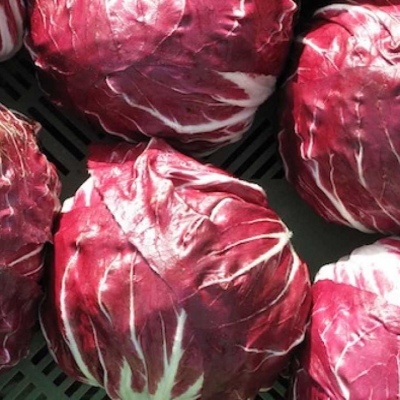 Although this is called a challenging crop to grow, it is not quite so challenging in the Calgary climate. It does take a bit more work but the use of the young leaves then heads later makes the work more than worthwhile. The young fresh heads are a visual delight for the eyes and a culinary treat for the taste buds! A spreading, leafy plant producing open, round heads 5-10 cm in diameter. Beautiful dark red leaves that withstand considerable frost. Follow our planting instructions for our foolproof method of growing great Radicchio. A cold frame or a basement is all that's needed to enjoy these culinary delights.
Although this is called a challenging crop to grow, it is not quite so challenging in the Calgary climate. It does take a bit more work but the use of the young leaves then heads later makes the work more than worthwhile. The young fresh heads are a visual delight for the eyes and a culinary treat for the taste buds! A spreading, leafy plant producing open, round heads 5-10 cm in diameter. Beautiful dark red leaves that withstand considerable frost. Follow our planting instructions for our foolproof method of growing great Radicchio. A cold frame or a basement is all that's needed to enjoy these culinary delights. -
Out of stock
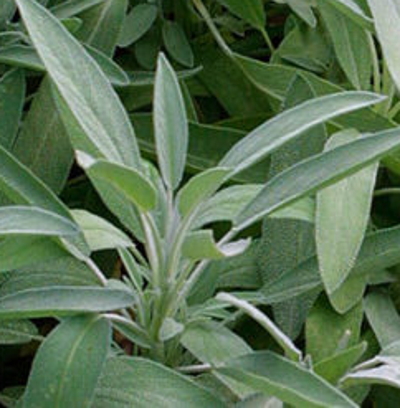
A staple of the herb garden. Dusty, green leaves are used in dressing, sauces, salted herbs, sausage, and tea. Make a good base for dried floral wreaths. Also known as garden sage. Perennial in Zones 4-8.
-
Out of stock
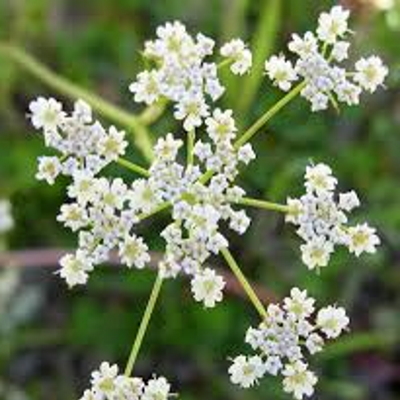 Caraway reveals its close family ties to carrot through its carrot-like, feathery foliage, and the long taproot it develops in the first year. Like the carrot (also a biennial), the plant stores energy in this root to send up a tall flower stalk in year two, which is followed by seeds for the next generation. Use the sweet foliage to flavour soups and salads, use the seeds to flavour bread and baked goods, and even use the carrot-like taproot as a regular root vegetable.
Caraway reveals its close family ties to carrot through its carrot-like, feathery foliage, and the long taproot it develops in the first year. Like the carrot (also a biennial), the plant stores energy in this root to send up a tall flower stalk in year two, which is followed by seeds for the next generation. Use the sweet foliage to flavour soups and salads, use the seeds to flavour bread and baked goods, and even use the carrot-like taproot as a regular root vegetable.